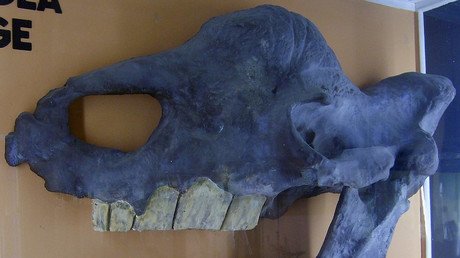‘We need to rewrite astronomy textbooks’: Black hole ‘donuts’ actually more like ‘fountains’
Using some of the Earth’s most powerful telescopes and supercomputers, Japanese researchers have made a discovery about black holes which may force a rewrite of the world’s astronomy textbooks.
Takuma Izumi, a researcher at the National Astronomical Observatory of Japan (NAOJ), led a team of astronomers who were investigating the theorized ‘donut’ shaped structures at the gaping mouth of the universe’s supermassive black holes.
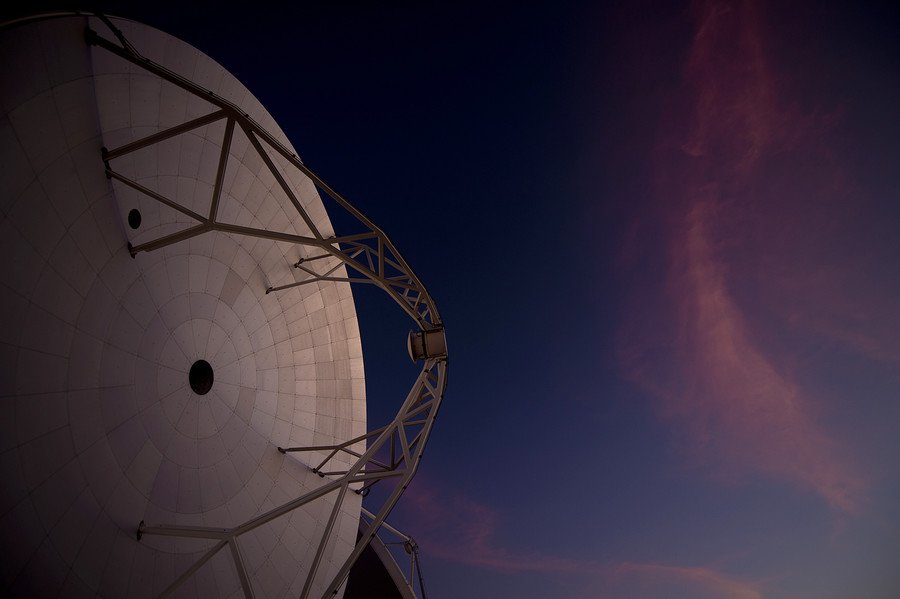
Specifically, the team pointed the Atacama Large Millimeter/submillimeter Array (ALMA) at the central black hole in the Circinus Galaxy, located roughly 14 million light-years away from Earth.
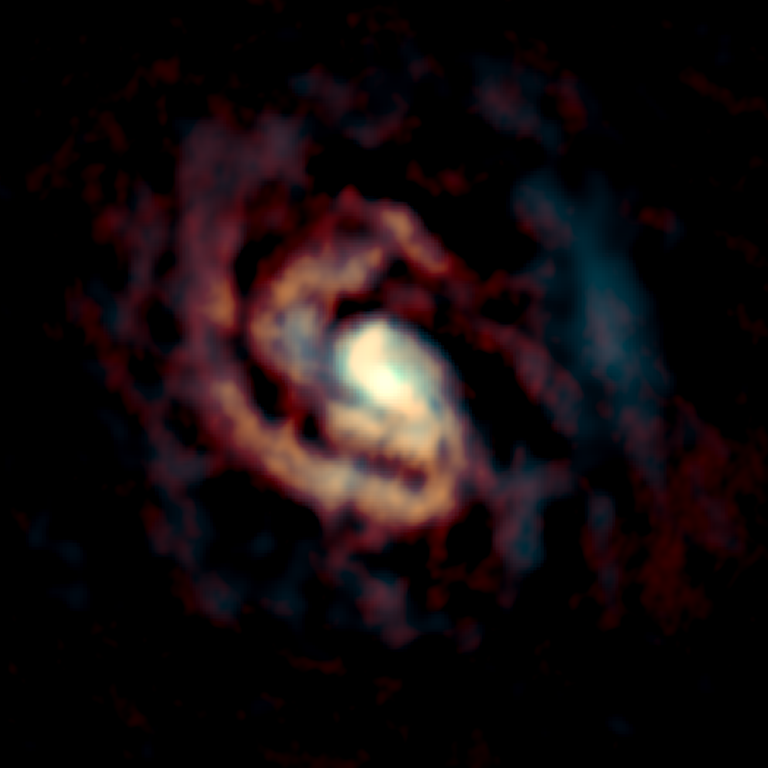
The team then compared the observations with a simulation produced by the Cray XC30 ATERUI supercomputer and they discovered that the rings of gas around supermassive black holes, which are millions or even billions of times as heavy as our sun, found at the centers of galaxies are not quite the simple donut shapes that were previously theorized.
Instead, the gas expelled from the black holes combines with additional gas that is falling inwards creating a circulating pattern not dissimilar to the water in a public drinking fountain.
According to Izumi’s team’s model, the initial cold, falling gas forms a disc at the mouth of the black hole.
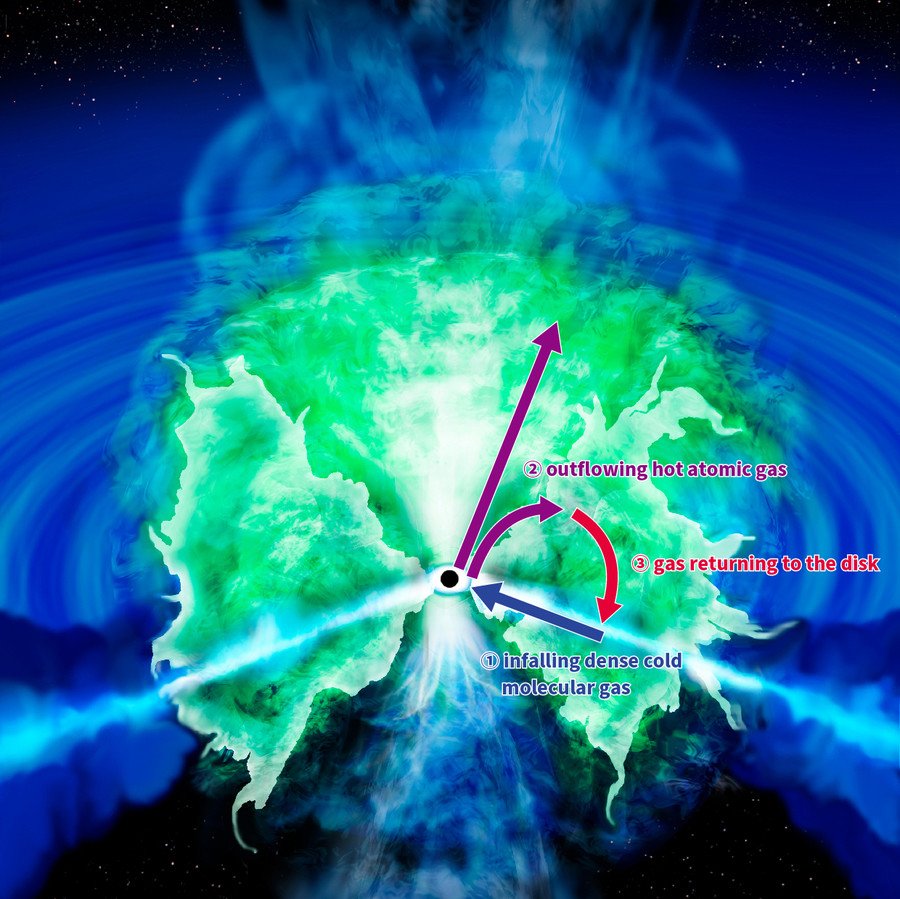
As it falls it heats until the molecules break up into their constituent atoms and ions which are then expelled above and below the disc.
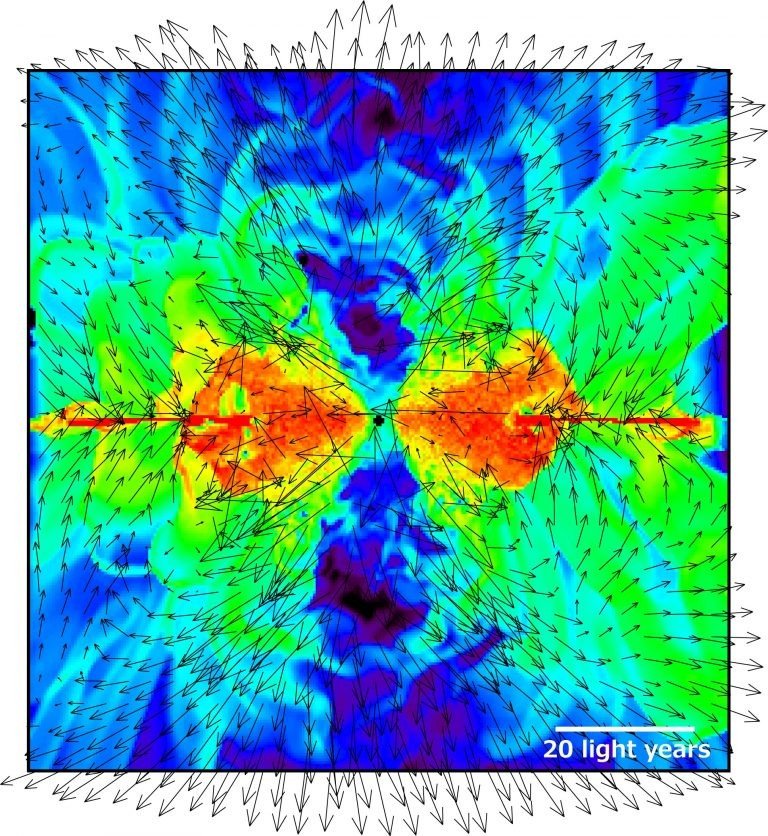
The hot atomic gas fired upwards then falls back on top of the disc creating a tumultuous three dimensional structure.
READ MORE: Massive black hole’s spectacular spin ‘may rotate space around it’
“By investigating the motion and distribution of both the cold molecular gas and warm atomic gas with ALMA, we demonstrated the origin of the so-called ‘donut’ structure around active black holes,” Izumi said in a press release. “Based on this discovery, we need to rewrite the astronomy textbooks.”
Think your friends would be interested? Share this story!













